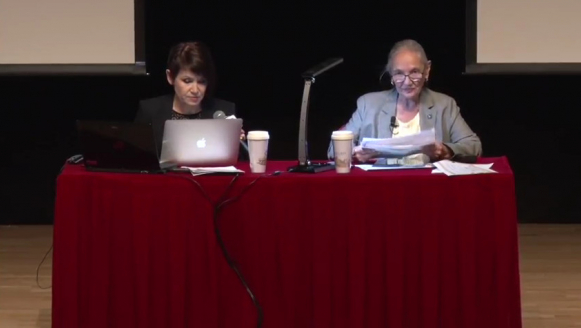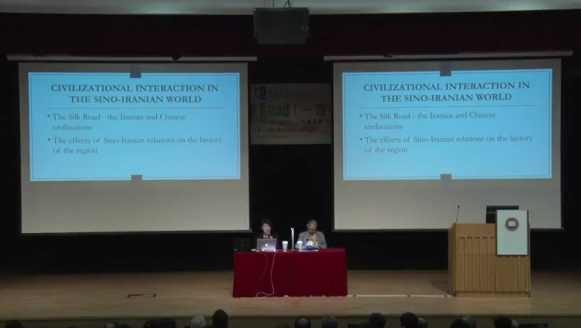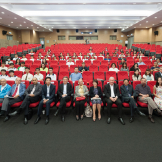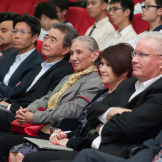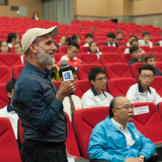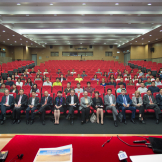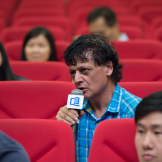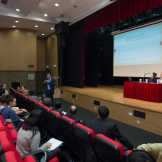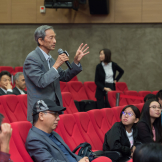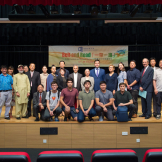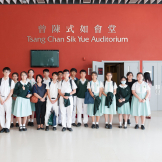

Kazakhstan Academy of Sciences
Professor Klara Khafizova is currently an Academician of Kazakhstan Academy of Sciences. As a sinologist, Professor Khafizova specialises in the study of the political strategies of Central Asia, Sino-Kazakh relationship and the peoples of Central Asia (Kazakh, Dzungar, Uighur). Between 1958 and 1964, Professor Khafizova studied in Tashkent State University and Beijing University. In 1995, she obtained a PhD from the Oriental Studies Institute of the USSR Academy of sciences (Moscow). Professor Khafizova has taken up various posts including:
- Chinese language teacher
- Senior Fellow of the History, Archeology and Ethnology Institute named Chokan Valikhanov;
- Senior Fellow of the Uighur Studies of the KazSSR Academy of Sciences;
- Head of the Chinese Philology Department of the Kazakh National State University;
- Head of the Foreign and Defence Policy Department of the Kazakh Institute of Strategic and International Studies on behalf of the President of Kazakhstan;
- Director of the Strategic and International Studies Center and Professor of the International Relations Department of the Kainar University.
Silk Road: Myths and Reality
The history of Great Silk Road could be dated back to two millennia ago. Myths and reality of the Silk Road have formed an integral part of the Chinese civilisation and influenced the role of China globally.
There are many dimensions in studying the Silk Road, ranging from economics (economic geography), culture, politics (geopolitics) and military. The Silk Road will be discussed in three aspects:
1. Why does the idea of the revival of the Silk Road and its spirit regularly appear in China and the majority of researchers also see it connected with China?
This is triggered by both economical and strategic factors that China wishes to establish stable regional markets, political and strategic partners. It is against this background that the geopolitical alignment of forces along the North-West and South-East directions is of great importance.
2. What is the origin of this idea? What are the reasons for the flourishing of the Silk Road, and what leads to the withering away of its “branches” and “roots”?
A vital source of revitalization of the Silk Road is a combination of idealistic and pragmatic ideas, based on historical information on the Silk Road in China. The flourishing of the Silk Road in the Middle Ages was the result of the interaction of the Chinese, nomadic and Islamic civilisations. With the control of the Silk Road passed to Europeans in the 18th – 19th centuries, and the further expansion of the concept of the West to America, the geographical circle of the Silk Road was closed.
3. Usually researchers look at the Silk Road based on the interests of their countries and regions and from the angle of their civilisation and universal achievements of humanity. What is the role of the Silk Road in Kazakhstan's past (and partially that of Central Asia) and in its present?
The modern Silk Road are reflected in gas pipelines, high-speed railways, fibre-optical, and satellite communications that have crossed Kazakhstan and Central Asia, and crystallised into the megaproject One Belt One Road. The modern Silk Road connects all countries along this Belt and Road.
China and Iran on the Silk Road
Originated from the ancient times, the interaction of the civilizations of the China and Iran along the Silk Road formed the backbone of the Sino-Iranian relations. The establishment of diplomatic and cultural ties between the two countries gave a powerful impetus to their technical and econimic exchange and development. They represented two poles of human civilization connecting to other parts of the world: the Middle East was connected with Greece and Rome, and China with the Asian Pacific Region. These poles pulled the Central Asian Region through the Silk Road into their orbit. In the XII-XV centuries, the Mongols brought Iran and China closer than ever before through their communications network.
As one of the main exporters of oil, while Iran was under the strong influence of the USA in the 1950s, China adopted the same attitude to treat all Islamic countries including Iran. Two countries established diplomatic relations in 1971 and since then have been developing bilateral trade.
With the formation of the Islamic Republic of Iran, its relations with the PRC improved. China would buy Iran’s crude oil 4% above world prices. Nowadays, Iran remains a key partner of China among the countries of the Persian Gulf. China sees Iran as an advantageous economic partner. On the front of foreign policy, China highlights the civilizations of ancient China and Iran and the "common destiny" and "common goals" of the peoples of the two countries. It pursues a flexible policy in which, under difficult circumstances, the concepts of pragmatism and "moral support" are applied to such a "turbulent" region in the Middle East. The relations between China and Iran depend on their position in the foreign arena and on the structure of their common foreign policy.
